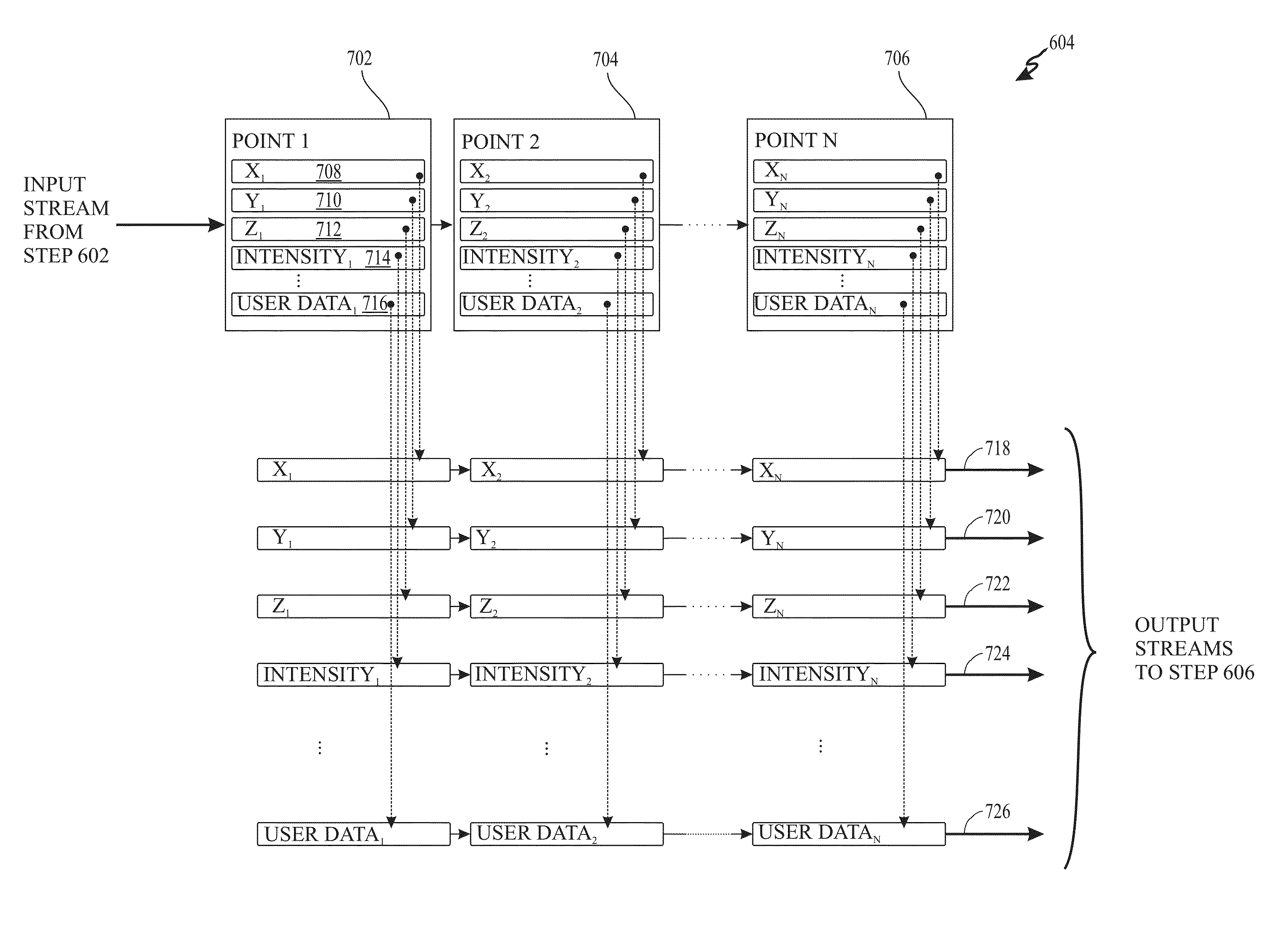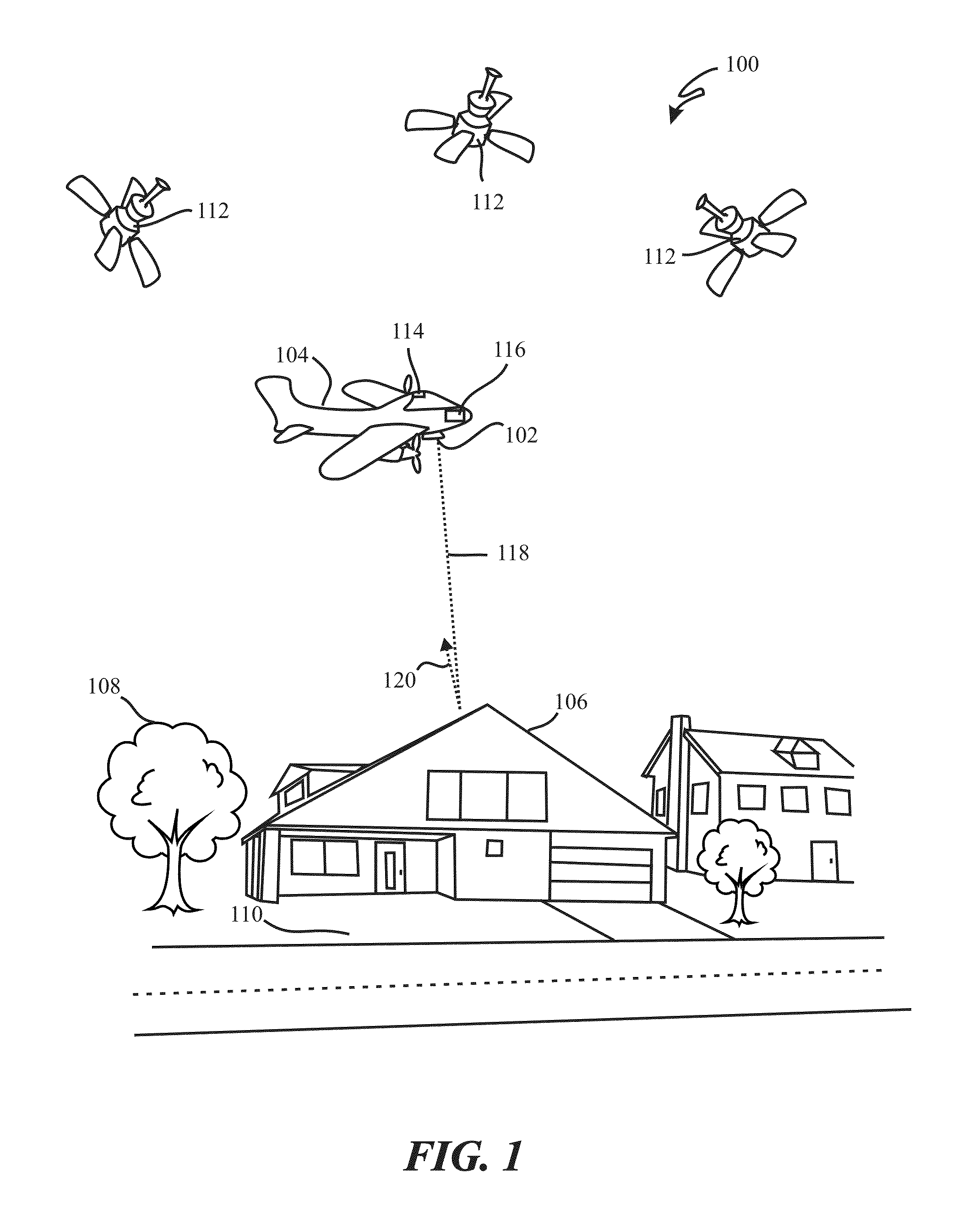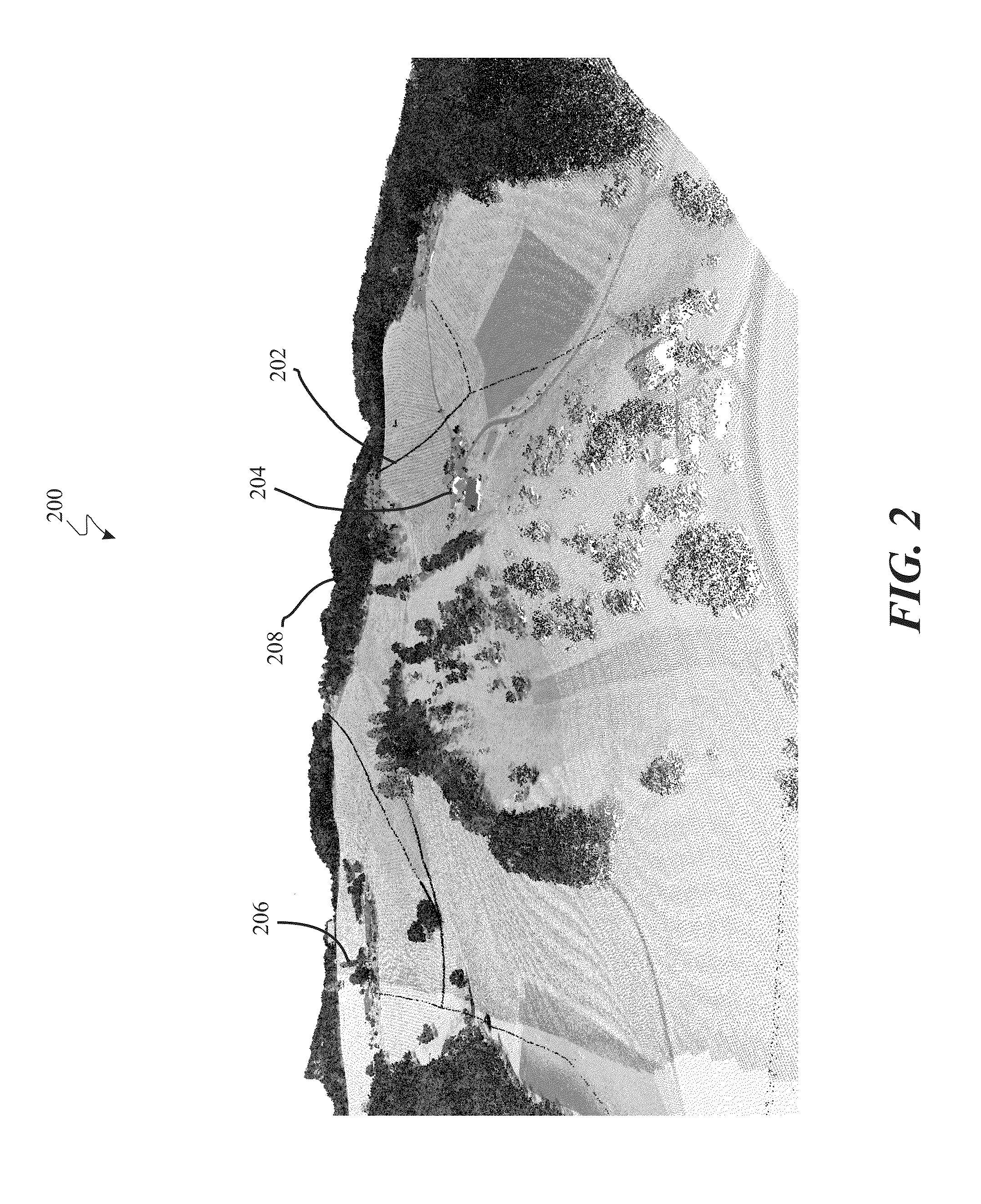Light detection and ranging (LiDAR)data compression and decompression methods and apparatus
a technology of light detection and ranging, applied in the field of compression and decompression of lidar data, can solve the problems of inefficiency of entropy encoding algorithms when compressing geometrical data, high cost of las files storage, and inability to store them
- Summary
- Abstract
- Description
- Claims
- Application Information
AI Technical Summary
Problems solved by technology
Method used
Image
Examples
Embodiment Construction
[0032]The present invention provides methods and apparatus for compressing three dimensional (3D) datasets (e.g., LAS data files) using domain-specific information about the 3D data scanning. In accordance with the present invention, single-rate, lossless compression of 3D point clouds and related scalar values is achieved. The data points in the 3D datasets each include x,y,z coordinate values and the related scalar values. The correlation between the data points is exploited using a predictive coding method. The data points are encoded based on the difference between their value and their predicted value. Thus, only the differences in the two values are needed to recover the data points. The substantial amount of data that can be accurately predicted need not be stored and thus, the resulting encoded representation of the 3D dataset can be significantly smaller than the original dataset.
[0033]In the prediction model according to embodiments of the present invention, three rules (e...
PUM
 Login to View More
Login to View More Abstract
Description
Claims
Application Information
 Login to View More
Login to View More - R&D
- Intellectual Property
- Life Sciences
- Materials
- Tech Scout
- Unparalleled Data Quality
- Higher Quality Content
- 60% Fewer Hallucinations
Browse by: Latest US Patents, China's latest patents, Technical Efficacy Thesaurus, Application Domain, Technology Topic, Popular Technical Reports.
© 2025 PatSnap. All rights reserved.Legal|Privacy policy|Modern Slavery Act Transparency Statement|Sitemap|About US| Contact US: help@patsnap.com



